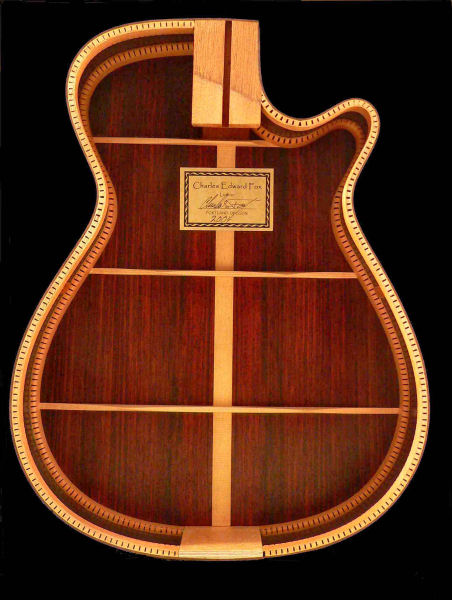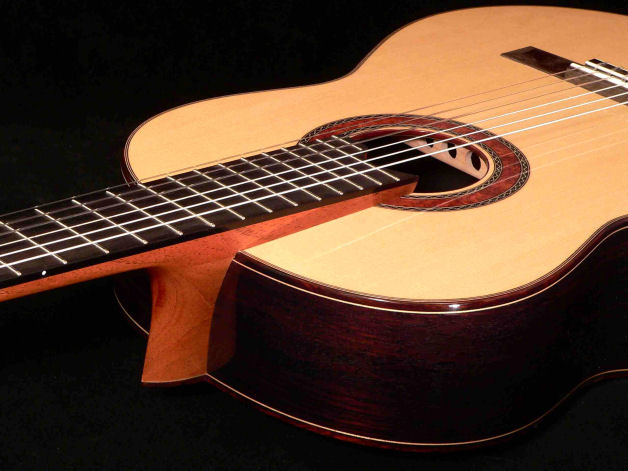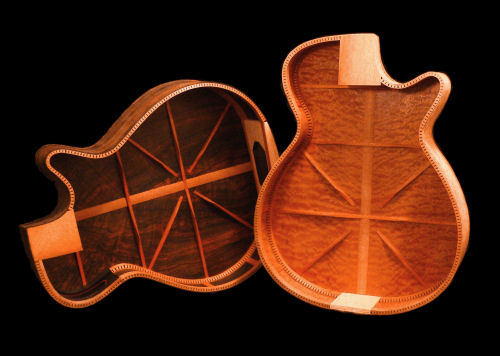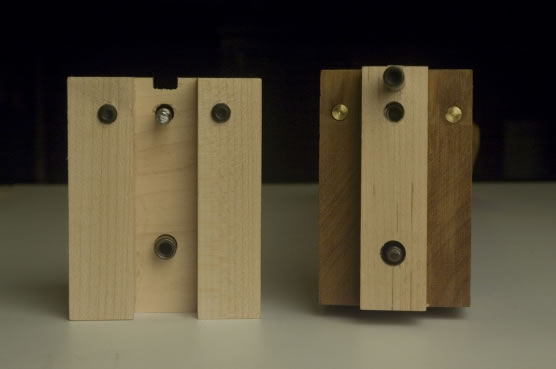American School of Lutherie
expert training for luthiers of all levelsHands-On Acoustic Guitar Making
Hands-On Electric Guitar Making
Contemporary Guitar Making
Advanced Design Features
Setup, Maintenance & Basic Repair
ADVANCED HANDS-ON ACOUSTIC GUITAR MAKING
ADVANCED HANDS-ON GUITAR MAKING
Steel String
Duration: 3 weeks, Monday - SaturdayClass format: Four guitar makers will build ambitious performance-quality steel string instruments of their own design.
Advanced Hands-on Guitar Making invites you to take your game to the next level by deepening your understanding and mastery of the craft. This class is for folks with some guitar building experience, folks with a practical grasp of the craft. The 3-week format allows you time to focus in particular on the designing and voicing of guitars, while adding a few new design features to your repertoire and skill set.
Please email with any questions, or call to speak with us personally.
Tuition: $4500 plus materials
Advanced Hands-On Guitar Making builds upon ASL’s original 2-week hands-on modern guitar making class. The extended 3-week format offers additional scope for concentrating on three areas of fundamental interest throughout the building process – (1) designing guitars, (2) voicing guitars, and (3) learning optional construction features. Whether you’re creating a new guitar for yourself or prototyping a production model, this is a unique opportunity to focus full time, without interruption, on your personal project and goals. My job is to help you in every way to achieve those goals.
GUITAR DESIGN
The ability to design an instrument from scratch and draw up accurate plans and patterns is essential for any real ownership of this craft. Knowing how to d esign a guitar allows you to become the true author of your own work, to express your own creative vision, and to advance in your work as an individual.
In this advanced class you’ll learn how to imagine and create an original instrument; define its purpose and intended qualities, determine its dimensions, proportions, materials and parts, resolve their many critical relationships, draw up plans, and create patterns to guide the project. You’ll follow a step-by-step sequence of decisions that leads to a performance quality musical instrument.
VOICING
The timeless traditional method of voicing a guitar depends on intuitive skills that are developed over a lifetime of guitar making - tapping and stroking, flexing and weighing, listening all the while, and calculating each next stroke of the scraper, knife, chisel, or plane. In recent times, these personal skills have been bolstered by precision scales, dial gauges, and other tools, to determine solid data that adds objective insight and meaning to the highly subjective traditional means.
Voicing a guitar means optimizing its responsiveness, power, musical complexity, dynamic range, and other desirable sound qualities. People build guitars for many reasons and approach the work from many angles. But when one realizes that it’s really all about the music, voicing becomes clearly the most important and central part of the craft. It’s what differentiates a truly meaningful musical instrument from a perfectly crafted guitar-shaped object.
A more technical voicing methodology uses a signal generator and hand-held speaker to drive an instrument’s top or back plate in an effort to determine both its resonance frequencies and its behaviors at those frequencies. The vibrating plate’s otherwise invisible behavior is made visible through patterns created as a dusting of glitter or sawdust retreats from the vibrating plate’s most active areas and gathers in the plate’s inactive nodes. By adjusting the stiffness of a plate and its braces and observing its effect on the resulting Chladni patterns, ideally efficient plate behaviors can be approximated.
The most current approach to voicing guitars adds to the above tools uses a soft hammer to briefly excite an instrument’s total output spectrum with a light blow to the bridge, a microphone to feed the sound of that event into a laptop or mobile device, and spectrum analysis software to determine the guitar’s main resonances. Used artfully throughout the building process, it’s possible with these tools to place a guitar’s main resonance frequencies in a more or less ideal relationship that’s associated with fine sounding instruments.
Of course, there’s great value in all of these approaches. You’ll combine the principles of each in a methodical voicing technique that you can vary to suit your experience of what works best for you.
DESIGN FEATURES
The modern American handcrafted guitar has evolved considerably beyond its conventional manufacturing origins. Today’s explosion of innovative design and construction features are the result of thousands of individuals building guitars independently, most of us knowledgeable in some other field and viewing the guitar freshly through the lens of our personal background and expertise.
Guitars built in this advanced guitar making class feature removable necks, rigid rims, double linings, C-shape neck blocks, compound radius finger boards, semi-hemispheric fret ends, and other high-end construction and design features already familiar to graduates of ASL’s 2-week hands-on class.
The advanced 3-week class will add to those features Venetian cutaways, side sound ports, unlimited material and trim choices, rotated finger boards, and elevated or adjustable necks, and other features that can be considered in our pre-class design conferences.
Good times
Did I mention that we have lots of fun along the way? Our work is serious but certainly not humorless. Each class is typically an interesting mix of bright and good hearted folks with diverse backgrounds, from all points of the compass - good company, lively dialog, intelligent conversation.
Reality Check – three sober notes
I very much enjoy introducing beginners to this craft but this advanced class is for folks with some guitar making experience and an ongoing involvement with the craft. Our tools and construction methods will be familiar to past ASL students but they will be new to others and perhaps beyond the reach of someone who built a guitar or two long ago and wishes now to begin again. Our 2-week hands-on program is perfect for that scenario and it’s been my privilege to host and mentor many such returnees long absent from the craft.
In spite of its emphasis on designing your own instrument, unlimited materials choices, optional features, etc, please understand this advanced class is not a ‘Build Your Dream Guitar’ jamboree with no constraints at all. The basic neck and body architecture, construction features, and the methods that we are set up for, are what they are. My commitment to you as a teacher is to be always encouraging and supportive, but I’m responsible for the class working for everyone, and for sharing my time and energy equally with each student. I dislike saying no as much as you might dislike hearing it, so please be prepared to go with the program if you register for this class. If you find yourself straining to personalize your instrument beyond the limits set out, this class may not be what you’re looking for.
Students in our 2-week hands-on class work full time to complete their guitars in the time available. This advanced class’s additional week of time is pretty well accounted for by the scheduled activities described above. As a result, things like inlay, arm rest bevels, and many other popular new design features are simply beyond the scope and focus of this intensive 3-week workshop.



